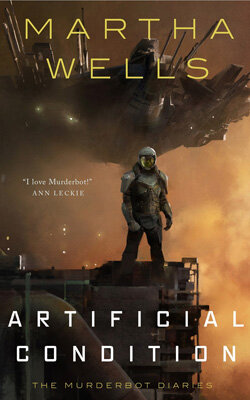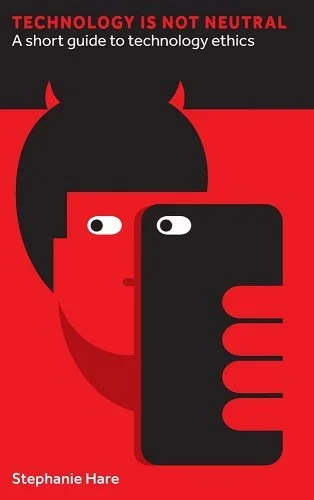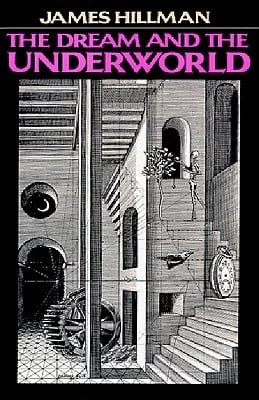Cameron's Book Round-Up, 2024, part 5
We have an island of tolerable weather here, so I’m going to give you all a slate of book reviews and rush off to complete other things. For the record: genocide is bad (so at least click this button if you can’t actually donate to an organization like Medecins sans Frontieres or the verified but informal side of things like eSims for Gaza) and given the shape of things in the US, it might be a good time to consider next steps — whether that’s making sure your passport is valid or taking a Stop the Bleed course.
Now that that’s done, I guess I agreed to write about some of the books I’ve been reading.
※
The Hunchback of Notre Dame by Victor Hugo trans Frederic Shoberl.
The French edition of this book was reviewed by Edgar, and I’m pretty sure that the translator wasn’t listed when I picked this up from Libby: I probably wouldn’t have gone with a 190 year old translation of this book. As a result of the translation, I found this book to be something of a slog — but enough of the original brilliance shone through to allow me to appreciate it. While I feel this way — and, indeed, while I linked to a different translation of this book — I don’t regret going through it.
Different eras have different aesthetics that they value. The early Victorian novel is radically different from the late Victorian novel is different from the 20th century novel, is different from our novel, and we could subdivide that further still. What we have here in this translation is a snapshot of Hugo’s own work, translated while he was still alive (indeed, I believe it was translated before Hugo’s Le Miserables was even begun.) We have talked a great deal about translation on this website, and a bit about adapting works: the Shoberl translation, while I will pass it by when I return to this novel at some point in the future, was excellent in showing me how French works were brought into English at such a time — and can give information about how it might have gone on to influence Dostoevsky and other writers (given is possible influence on anglophone novelists of Charles Dickens’s generation and the influence of these novelists on Dostoevsky et al.)
This isn’t simply about importing the mores of one society into the stories of another: languages act as interpretive frameworks, certainly, but it’s more about the choices made in transferring it from language A to language B, the decisions made that might warp it and effect it and later become — accidentally and unexpectedly — hegemonic in form, the way that people might add film grain to digital video or create 8-bit versions of modern video games.
I believe it is worthwhile to read multiple translations of “canonical” works, if you have the ability. Especially versions from different times and places.
As for my reactions to the actual story included — I must admit that I had thought from popular reception that Quasimodo would play a larger role in the plot, as such a character would in contemporary fiction. Instead, he has a near-silent, Caliban-like role, and we only occupy his subjective interpretation of the world two or three times throughout the whole corpus of the book. Though it’s a book far less interested in the subjective experience of its characters as a valuable factor in itself than it is in creating a simulacrum of the Paris of the late medieval world that is alive with a more properly medieval vitalism. There’s an ensouled quality to the city that Hugo deftly spins for his readers, inviting them to experience this strange sub-creation, where the line between the mind’s “inside” and the world’s “outside” is blurred into a foggy suggestion.
Image is the cover of Artificial Condition, the second novella in the series. I think it might by favorite of the lot.
The Murderbot Diaries by Martha Wells.
(Consisting of All Systems Red, Artificial Condition, Rogue Protocol, Exit Strategy, Network Effect, Fugitive Telemetry, and System Collapse. I also added the short story "Home: Habitat, Range, Niche, Territory", which takes place between Exit Strategy and Fugitive Telemetry.)
We’ve done all of these before, so I’m lumping them all into one review and linking to an omnibus of the first four. Listening to Notre-Dame made me want something more contemporary, so I returned to a set of novellas that I’ve read previously: Martha Wells’s Murderbot Diaries series. I had previously read through them in a more spread out and slow fashion: this time, I consumed them one after another, sometimes three or four in a day of work (working outside, alone, is very conducive to mainlining audio books.)
As a side note, I’m not using “consume” in that previous paragraph as it’s normally used, to indicate the passive consumption of a binged media product. I’m using it in the sense that one consumes something when you crack the bone to get at the marrow. It was an active, toothy process.
What new thing can I say about the Murderbot books? They’re very good. They provide an interesting science fictional universe, examining closely the relationship between (fictional, interesting) AI and humans, and portraying the horrors of a space capitalist society from a group that have at least one foot outside of that system. Imagine if the Company from Alien was hired to provide security for a Green Peace project and the story is told from the perspective of the security android, and you’ve got a fairly accurate beginning.
They’re well worth reading, is what I’m saying.
Technology is Not Neutral by Stephanie Hare.
A primer on technology ethics, written by a woman who has a doctorate from the London School of Economics and Political Science, as well as feet in the French and American academic worlds and the so-called “real world” beyond it. She examines a number of issues — largely focused on facial recognition and vaccine passports, but offering useful ways of thinking about the way that digital technology is used.
One of the more interesting things, in my opinion, is her handling of technology ethics as consisting not simply of ethical and political thought, but as partaking in all of the major branches of philosophy — there is a metaphysics implicit in the technology that we use, there are aesthetic, logical, epistemic, and (yes) political concerns that we need to weigh but we refuse to. A big part of this is considering what issues technology is meant to address: what assumptions are built into this framing of the problem and what is the goal?
Oftentimes, we ignore these basic issues and just sort of sleepwalk through things. I felt that Hare did a good job of laying out all of the issues in this discussion and explaining them clearly, and I will most likely be following her work more closely in the future: after all, while facial recognition and vaccine passports are important issues, they’ve been superseded in the discourse by other ones and I’d like to hear her thoughts on LLMs.
The Dream and the Underworld by James Hillman.
Hillman is a strange thinker: a psychologist fascinated by dreams and the imaginal, who gives allegiance to things nocturnal and chthonic — not as a Lovecraftian-Landian figure, but as someone who intuited the Deleuzoguattarian maxim that “It is not the sleep of reason that engenders monsters, but vigilant and insomniac rationality” — and advocates for their consideration.
The materialist read is that dreams are almost like a digestive process: a dream is part of your brain burping as it metabolizes your day, it signifies nothing it just is. In both Freudian and Jungian conceptions of dreams, they are considered to be resources that are to be tapped and mined for the benefit of what Hillman calls the “daylight world”. Hillman considers this to be a violation of sorts, which he compares to the myth of Hercules in the Underworld, chaining Cerberus and forcing Hades from his throne. What we need, Hillman argues, is not a Herculean ego, descending into the underworld as a rapine invader but to approach dreams as someone being initiated into a mystery religion: something is being revealed to us but, simultaneously, it has no obligation to us.
This is all based on something that struck me as an almost Copernican insight that Hillman puts forward in the book: we accept that everything around us as we dream is an illusion of sorts, but there is a final, skeptical move that we flinch away from, a thought that we rarely even consider and are distressed by if we stumble into it, considering it too horrible. What if the self that perceives the dream is also an illusory part of the dream? What if there is, in addition to a daylight self, a nighttime self conjoined to it, asleep when the dayworld ego is awake and vice versa? Both are us, but they are not also each other.
Considering all of this makes the world much stranger and more interesting: I’m still considering the implications, however. Still, this is an excellent book to read.
The Shining Girls by Lauren Beukes.
I read Beukes’s Broken Monsters several years ago, and might return to it at some point. This story concerns a house in Chicago that moves through time, and the serial killer from the 1930s that the house — apparently a malevolent, sentient force — manipulates into killing women who “shine”, who have some kind of potential to change the world, from all through the 20th century. Principally, the story follows his final victim, who survives his attempt on her life with the help of her dog, and becomes a journalist in the hope of uncovering the truth of the attempted murder.
It’s a tight, pacey little book, very focused on the human portion of the story, but occasionally dipping into the true and utter strangeness of the situation. The nature of the house — how it moves through time, why it already has the trophies that the killer collects, how it communicates this to the killer — is left not so much unexplored as merely implied. Beukes gives enough about it to make it clear that these matters are not so much unconsidered as not in focus.
Because, at root, it’s not about the horrors that lie outside the candlelight of our knowledge, it’s about the people who brush up against those horrors and walk away, scarred. A number of authors working at the more literary end of the horror space (where it begins to edge into mystery) try to do this. I feel that Beukes tends to do it better than most.
A Brief History of Vice: How Bad Behavior Built Civilization by Robert Evans.
This book asks a very important question: what if someone like David Graeber or James C. Scott had decided to — instead of getting advanced degrees in anthropology — write for Cracked.com and conduct unwise experiments with homemade versions of historical narcotics?
Robert Evans, former writer at Cracked and current host of Behind the Bastards and other, similar podcasts, explores the origins of human-produced alcohol, the possible neolithic use of sounds as a consciousness-altering experience, mystery cult initiations, the proper(?) way to prepare fly agaric for a trip, and the origins of coffee, among other things.
It’s a very well-done book, and each chapter tends to consist of a historical deep-dive into a particular “vice” and then a memoir piece about Evans attempting to explore it in the modern day — usually with the help of his housemates and fiance. Paradoxically, the most interesting of these tend to be the ones where it doesn’t exactly work out: I was fascinated by the story he told about chasing the mythic Slovenian Salamander Brandy, which he concludes doesn’t actually exist, but led to him traveling around rural slovenia and talking with the locals through a translator to hear a number of different stories about how the myth began while they insist that he try their homemade schnapps.
It’s a diverting little read though there are a number of recipes (such as the Mayan constipation cure) that probably shouldn’t be tried.
A Light Most Hateful by Hailey Piper.
(Reviewed by Edgar here)
I’ll be honest, while I liked this one, I think that Piper’s style is better suited to novella-length outings. The main character, Olivia, is a high school aged girl who works at the drive-in movie theater in Chapel Hill, Pennsylvania. She’s originally from Hartford, Connecticut, but ran away after her homophobic father saw her kiss a girl, and she hitchhiked as far as Chapel Hill, where the couple that owns the local craft store took her in.
However, things really kick off after a strange storm strikes the town: people are “infected” by it, and become violent, shambling things. In addition to this, monsters now roam the streets, such as the snake-like “Lizzie” who appears to be hunting Olivia. All Olivia wants to do is find the people she loves — her foster parents, her best friend Sunflower, and get out of town.
Of course, it isn’t that simple.
This comparison might be a bit of a spoiler for two percent of our audience or so, but I was heavily reminded of The Gone-Away World by Nick Harkaway. Though, while that story draws on pulp and more masculine genres, A Light Most Hateful explores a similar territory through a more feminine, almost chthonic lens. Both also deal with intense friendships and how they can warp your perspective of reality.
Of course, framing it that way is now encouraging that two percent of the audience reading this who is aware of the book(s) in question to start throwing things at me, so I’ll be moving on.
The Will to Battle (Terra Ignota, #3) by Ada Palmer
(previous reviews findable through this page.)
I found the end of Seven Surrenders to be emotionally turbulent — those who have read it will know why — and in comparison, The Will To Battle is less turbulent but much more tense. The story continues to follow Mycroft Canner, murderer, madman, genius, and confidante of the most powerful people in the world, as he recounts the events that lead up to the first world war in three hundred years, in an age after the dissolution of the geographic nation-state.
The end of the last book, the second part of Mycroft’s “history” saw the world shattered: the utopia that everyone thought they lived in was revealed to have a foundation soaked in blood — not general, unthinking blood, but specific, meticulously-chosen blood — and a miraculous resurrection happened in front of the whole world. The result is that the system that the characters live in has been dealt a death blow: what, possibly, could follow after this?
War, quite obviously.
But this is a world with no soldiers, no veterans, nothing of the sort: all reports of war and how it is conducted are third-hand at best. This is treated as a source of horror: if this society, which has wonders as part of their everyday experience, which has eradicated hunger and disease, decides to go to war, they have a great deal of capability and no institutional knowledge for how to inflict damage that can be fixed after the fact.
Thankfully, a veteran has appeared: conjured by the miraculous child, Bridger, a representative of this universe’s god, in his final act, Achilles reappears. But it is Achilles not solely as Homer imagined him, but Achilles filtered through the stories that the child has heard: a real, independent being, but mingled with a soldier of the World Wars. It is up to Mycroft to chaperone Achilles to meet with the world’s leaders and for this half-fictitious demigod to teach the world to have a quick, clean war.
You know, like the Trojan War.
…oh, man, the fourth book, Perhaps the Stars is going to be depressing.
How To Blow Up a Pipeline by Andreas Malm.
I’m afraid to report that I’m getting Malm-pilled. I was introduced to his writing by a piece called "The Destruction of Palestine Is the Destruction of the Earth", a thirty-thousand word meditation on how the era of Fossil Empire — empires driven by self-sustaining, fossil-fuel based economies — was inaugurated by the 1840 conquest of Palestine by the British, in the first field use of steamboats.
This radically changed the calculus of naval warfare: no longer could a ship be becalmed or have its position determined solely by the wind. Likewise, a ship now had to be fueled. The map shifted.
But I am reviewing How to Blow Up a Pipeline, not his piece for Verso.
A more accurate title of this book might be Why to Blow Up a Pipeline. The more center-inclined members of the audience will be happy to note that there is a very little practical advice in this book, other than an explanation for how to deflate a tire without slashing it. What this book contains, though, is more important: it is a moral framework for weighing things and explaining why a motivated, mass movement that includes vandalism and property destruction is not just desirable but in fact absolutely necessary.
As such, this book is potentially far more damaging than a manual for property destruction. It is a persuasive argument for why that destruction can, must, should, and will happen: which means that it won’t help people already committed — it might persuade someone who is uncommitted, though.
So, do me a favor: buy a copy of this one, so I can afford to give more copies of it to all my friends and family for Birthdays and Christmases coming up, and then demand that they read it.
Please, help me be incredibly irritating to my loved ones for a good cause. I’m a youngest child, it is my highest joy.
※
If you enjoyed reading this, consider following our writing staff on Bluesky, where you can find Cameron and Edgar. Just in case you didn’t know, we also have a Facebook fan page, which you can follow if you’d like regular updates and a bookshop where you can buy the books we review and reference (while supporting a coalition of local bookshops all over the United States.) We are also restarting our Tumblr, which you can follow here.









